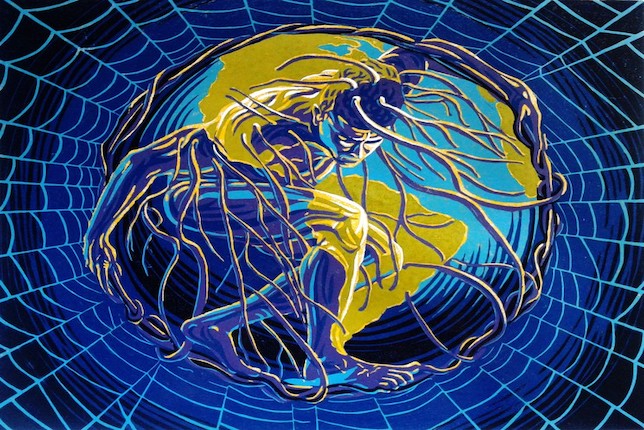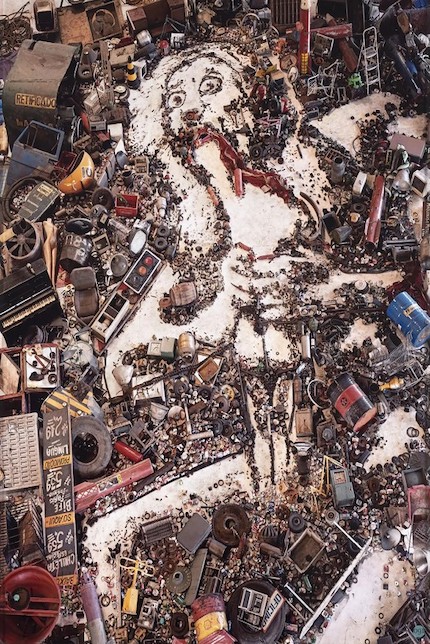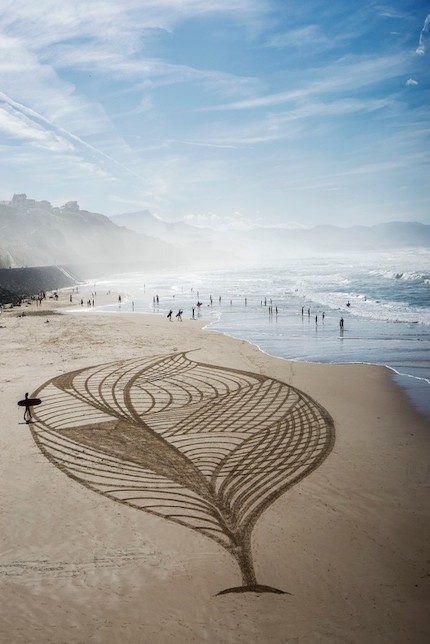
Sustainability and New Artists: How is sustainability becoming part of emerging artists’ creative process?
Nature has inspired humans ever since the cavemen first chose to adorn their walls with animal drawings. Throughout the movements of the Renaissance, Naturalism, Impressionism and then Land Art, our planet has continued to enjoy a near-constant presence in the artist’s gaze. However, in the face of climate change and environmental degradation, our relationship to the planet has shifted. Sustainability has moved to the fore of the public consciousness. Artists no longer depict landscapes for the sake of inspiring awe or to serve as a background for human subjects. No, the emerging artists of today often carry with them a sense of urgency as they strive to reduce our impact on the planet. Join Artsper as we explore sustainable art in the contemporary art scene.

The environment as muse
Sustainable art can arguably be defined in two ways. That is, either art that is made using sustainable materials and methods, or art that encourages conservation and sustainability. Using the environment as a muse enables many artists to contribute to the sustainable art movement. As with generations of artists before, artists today are capturing nature and drawing attention to its poetry and beauty. Rather than doing so with aesthetic reasons in mind, however, many artists are attempting to underscore concerns about climate change.
These ecologically-minded artists focus on a wide variety of landscapes. For example, Angeles Peña’s striking images of glaciers. In these works, Peña unites photography as a documentary resource with the poetry of landscapes in order to highlight the direct effects of climate change on the environment. In doing so, she both uses the environment as her muse and her motivation to inspire greater sustainability. Jérémy Gobé uses the environment as his muse in a similar way. By integrating science with his innovative art, Gobé aspires to save the coral reefs. These artists prove that by using the environment as their muse, they are able to promote sustainability through their art.

Sustainable art at the fore: spreading public awareness
Many artists also incorporate sustainability into their creative process as they use their art to spread awareness. The artist Travis Mitzel argues, for example, that “[although] science is important, a lot of the public is not scientifically literate. With art, I can reach people who would be […] totally isolated from this content otherwise.” For some, sustainable art therefore represents the opportunity to cast a social commentary with the aim of educating others. Many established artists, including Banksy and Lorenzo Quinn, use their fame as a platform to do so. Olafur Eliasson also famously did so through his work Ice Watch. Here, Eliasson imported a mass block of ice , sculpted it into pieces and arranged them in the Place du Panthéon. In doing so, he sought to illustrate the effects of global warming on glacial retreat.

Other emerging artists similarly provoke in order to emphasize the damaging relationship between humans and the planet. This is striking in the works of Samuel Maita who casts powerful social critiques through his depictions of animals and the planet. Emerging artists therefore incorporate sustainability into their work as, by spreading public awareness, many hope to inspire change at the individual and collective level. Is this not what Environmental Art boils down to?

And what about sustainable materials?
For some artists, incorporating sustainability into their creative process means being sustainable at an individual level through the materials they use. In doing so, these artists are both attempting to encourage others to do the same, and to underline the environmental crises facing the planet today.
It is perhaps no surprise then that recycled art is taking the art world by storm. Artists are increasingly turning to rubbish or recyclable materials to create completely unique works. This also prevents the items used from going to landfill where they would inevitably otherwise rot and pollute the environment. Vik Muniz is a leading proponent of this as he creates large scale works which, when viewed from above, create stunning scenes. Muniz argues that by working with rubbish, “you are basically working with something that you usually try to hide,” thus lending it its own unique beauty.

Other artists such as Zelda Zinn similarly use waste found on beaches or in landfill sites to critique the unsustainable throw-away society which we live in today. Recycled art therefore hits two birds with one stone… It is itself sustainable while also encouraging others to lead their own sustainable lives.
Working with the environment
Arguably, the core principle of sustainability is to live in harmony with the planet. Some artists therefore incorporate sustainability into their creative process by visually referring to this ideal.
This is not a new trend in the art world. The idea was first expressed in the Land Art movement of the 1960s. Artists strove here to reflect the relationship between humans and nature, making the environment both subject and matter of the work. This is perhaps most famously expressed in Robert Smithson’s Spiral Jetty which not only uses natural materials, but is also inspired by its surroundings and consequently becomes one with the existing nature.

Emerging artists today are similarly working within the framework of this ideology. Sam Dougados does so, for example, through his sprawling beach art creations. As he traces enticing patterns in the sand, he simultaneously draws attention to the beauty of the beach and the power of nature, as the sea effortlessly wipes away his work. In doing so, Dougados aspires to create an interaction between his work and its audience, and then his work and its environment. This harmonic ideal is therefore expressed and the desire for sustainability is clear.

The sustainable art of the future…
As the world is more and more impacted by climate change and environmental degradation, living sustainably needs to be a priority. Many emerging artists recognise this and are reflecting it in their works. From working with the environment to recycled art… We’ll just have to wait and see how new contemporary artists will revolutionize the art world in their drive for sustainability.
If you’ve enjoyed finding out about contemporary artists’ engagement with sustainability, you’re sure to love our selection of environmental art works!

About Artsper
Founded in 2013, Artsper is an online marketplace for contemporary art. Partnering with 1,800 professional art galleries around the world, it makes discovering and acquiring art accessible to all.
Learn more













